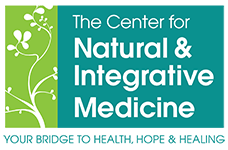The Center of Natural and Integrative Medicine is happy to remind you that Thursday, August 21st, is the seminar you have been waiting for all Month: Going Gluten  Free!
Free!
We have been blogging about this subject all month. The entire world is beginning to realize what a serious matter gluten has become in modern life. Check out our previous blog about the symptoms of Celiac Disease.
Gluten Free: What’s The Diet All About?
We invite you to give some consideration to your feeling of wellness. In a previous article, The Center of Natural and Integrative Medicine has explained gluten sensitivity and gluten intolerance. You do not have to have celiac disease to need a gluten-free diet!
What Is Forbidden On Gluten-Free Diets?
If you have been diagnosed with celiac disease or gluten sensitivity, the good news is that you can feel much better, and there is a treatment for your problems. The bad news is that there are many foods you will have to learn to avoid.
According to the Mayo Clinic, “a gluten-free diet is a diet that excludes the protein gluten. Gluten is found in grains such as wheat, barley, rye and triticale (a cross between wheat and rye).”
You start the gluten-free life by avoiding the consumption of all breads, cookies and other baked goods, commonly created with those grains. Cereals and wheat-based pastas will also go on your “forbidden list.” Do not reach for the oats because there is a problem with it also. The Celiac Disease Foundation recommends avoiding or limiting oats to the gluten free type.
 More good news for you is that now that the public awareness has been sharpened, you can find more and more alternative and delicious substitutes for gluten saturated foods. At The Center For Natural and Integrative Medicine, our doctors and staff recommend you search for foods containing:
More good news for you is that now that the public awareness has been sharpened, you can find more and more alternative and delicious substitutes for gluten saturated foods. At The Center For Natural and Integrative Medicine, our doctors and staff recommend you search for foods containing:
- Corn,
- rice,
- quinoa,
- Beans,
- seeds,
- Flax,
- nuts ( Eat these only in their natural, unprocessed form!)
- Fresh eggs and dairy
Do not worry about baked flavors, because you can create delectable baked goods with some very finely ground gluten-free flours made from rice, soy, corn,  potato,almonds and even beans!
potato,almonds and even beans!
Naturally you can still eat fresh meats, fish and poultry. You simply must avoid breading, batters and marinades that include gluten.
Additionally, you are totally permitted to enjoy fresh fruits and vegetables.
Just remember that gluten is the gluey protein that structures most bread. We are certain you have heard about a lack of taste in gluten-free foods. Do not believe it! At first you might need to adapt to a flat or bumpy texture, but you can still find or create flavor. More gluten-free foods are being discovered every day.
Remember what you are allowed to drink also. Just as you must avoid yeasty breads, you should not drink beer, mead or ale. They are usually brewed from grains that, or course, contain gluten.
Here is your golden rule: “Processed foods in general can be sources of hidden gluten, so adopting a diet that relies mostly on whole, fresh fruits and vegetables and quality protein sources can save you time reading labels.”
Big News This Summer From The FDA:
If you must buy a few of the somewhat processed foods and you see a gluten-free label, this news is especially for you. Directly from the FDA: “As one of the criteria for using the claim “gluten-free,” FDA set a gluten limit of less than 20 ppm (parts per million) in foods that carry this label. This is the lowest level that can be consistently detected in foods using valid scientific analytical tools.”
The FDA added, “This level is consistent with those set by other countries and international bodies that set food safety standards. This was true as of the new legislation in  August of this year.
August of this year.
“This standard ’gluten-free’ definition eliminates uncertainty about how food producers label their products. People with celiac disease can rest assured that foods labeled ‘gluten-free’ meet a clear standard established and enforced by FDA,” stated Felicia Billingslea, director of FDA’s division of Food Labeling and Standards.
What Can You Expect From Going Gluten Free?
Some people experience withdrawal symptoms for several days or weeks after cutting gluten out of their diet. These side-effects can include headaches, fatigue and intense craving for foods that contain gluten.
Chances are you are going to experience a new lease on life!
What To Do About Withdrawal Symptoms?
You should not worry about withdrawal. Such side effects abate within a few days or weeks. Likewise, patients claim different amounts of time for the gluten-related symptoms to abate or disappear.
Be patient. If there is significant damage to the small intestine, it might require two years for the body to heal and repair itself. Dr. Peter H.R. Green, director of the Celiac Disease Center at Columbia University states that if your symptoms “do not improve after several months of a gluten-free diet, you should consult your doctor, because your symptoms are likely not caused by gluten intolerance.”
As you can see, there is quite a bit of information to learn if you are considering becoming gluten-free. That is why the Center for Natural and Integrative Medicine is bringing you the special “Going Gluten-free” program on August 21st, at 6:30 at the Center! We certainly hope you will join us!

